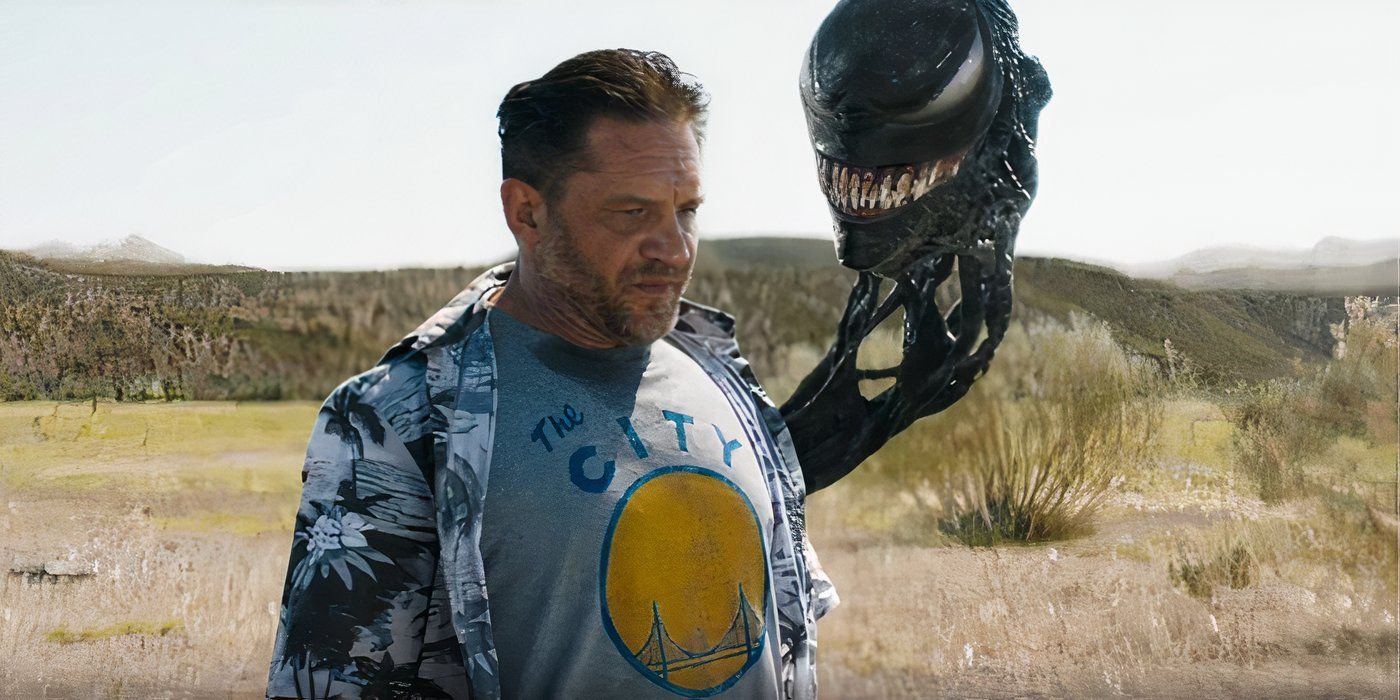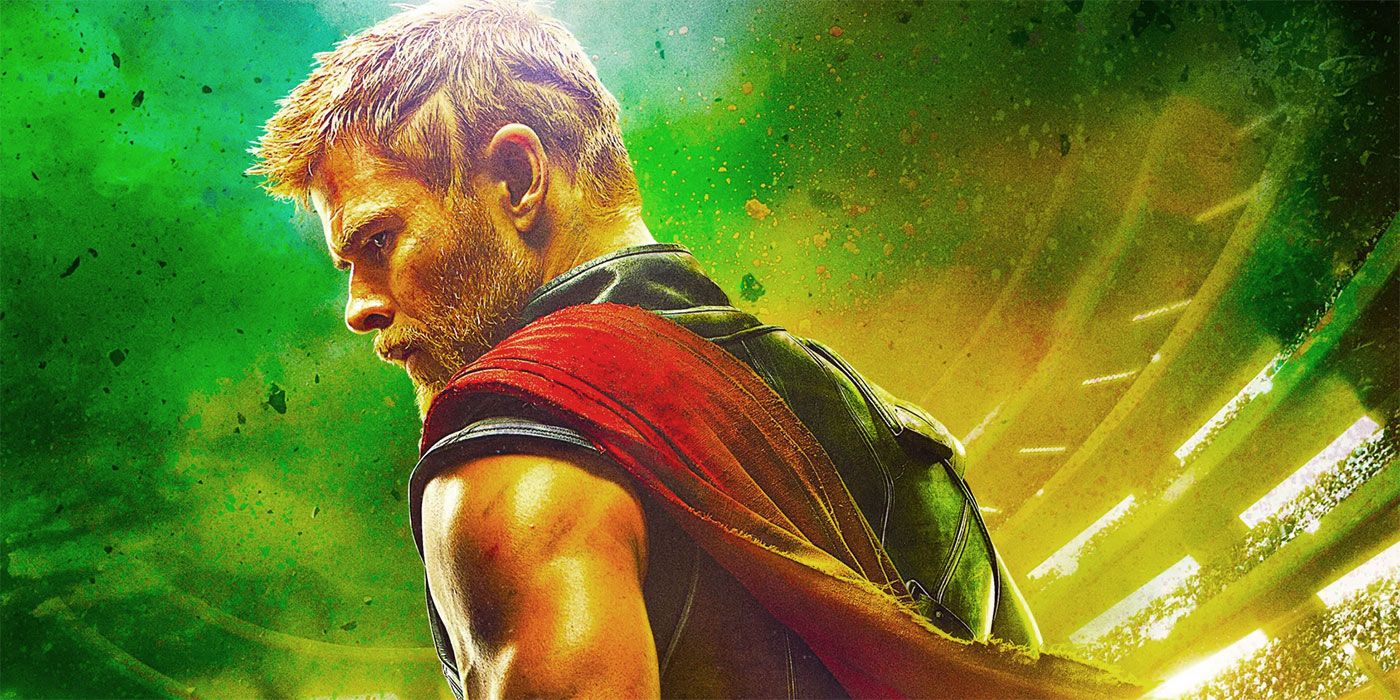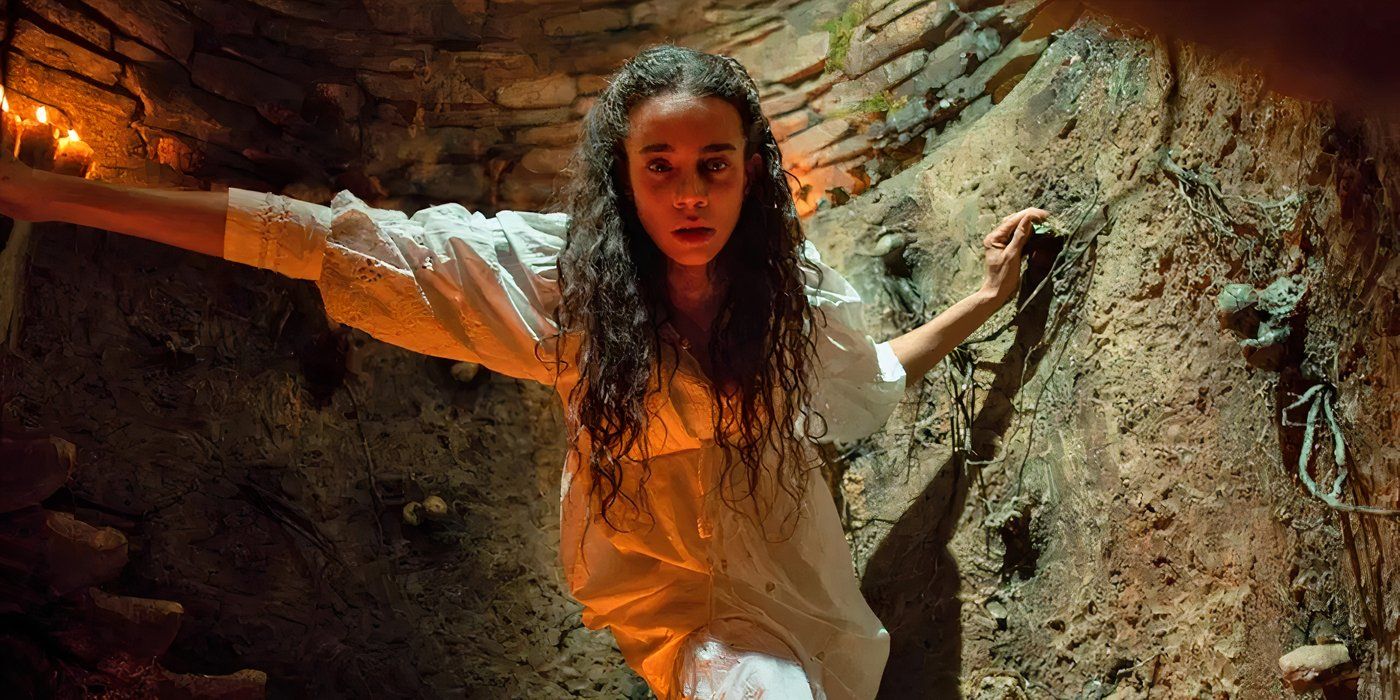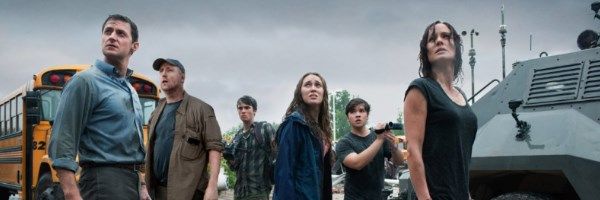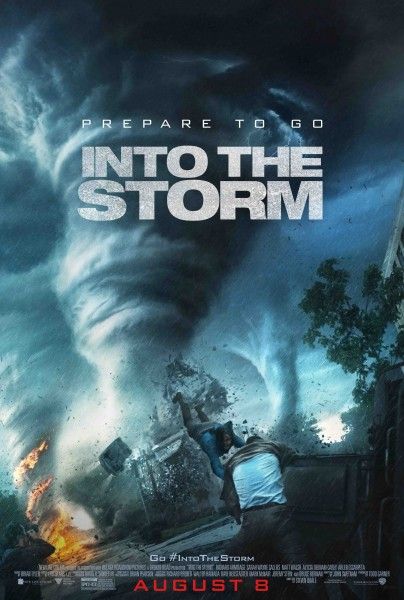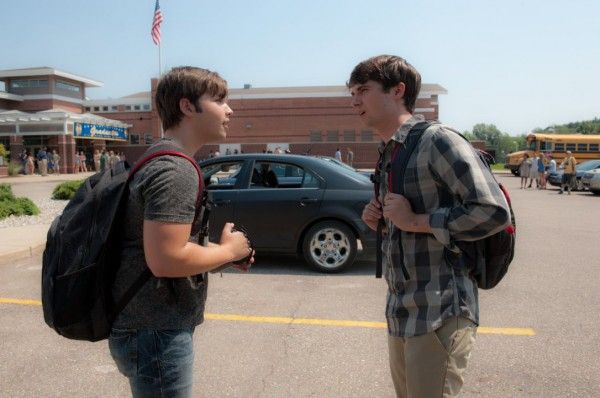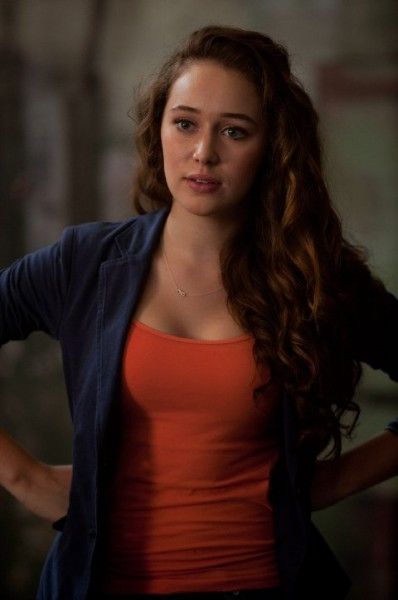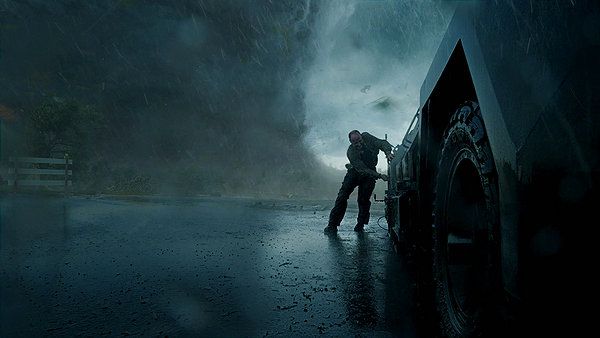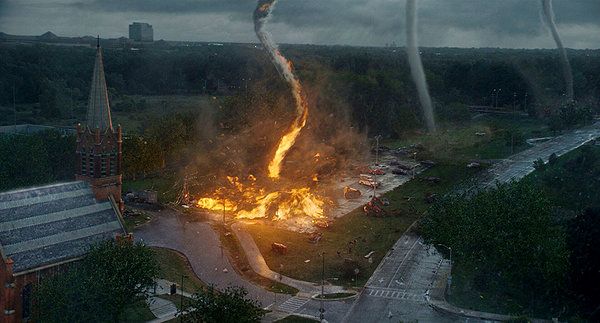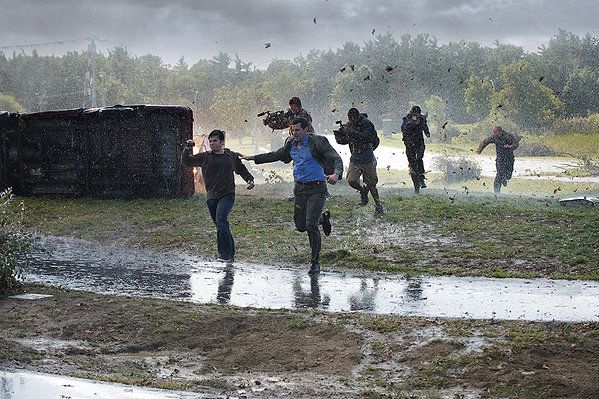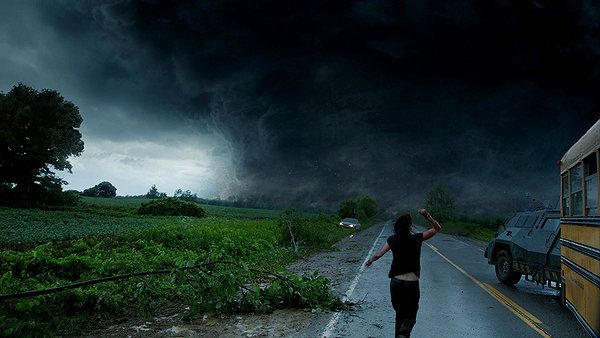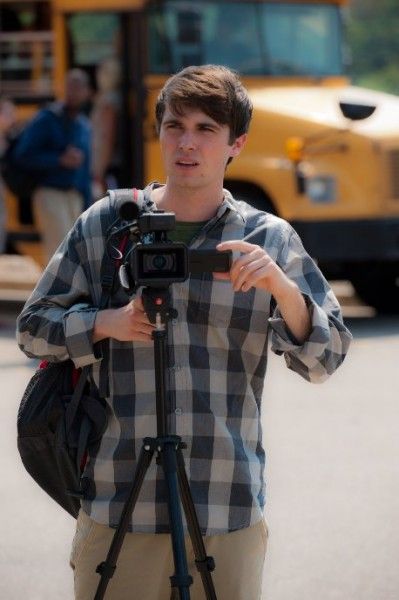If you’re into action-packed disaster thrillers, Into the Storm, directed by Steve Quale from a screenplay by John Swetnam, will take you on an intensely wild ride right inside a massive EF5 tornado. Told through the eyes and lenses of professional storm chasers, amateur thrill-seekers, and courageous townspeople, the movie puts you directly into the eye of the storm. With the film opening in theaters on Friday, August 8th, I recently had a chance to sit down at a roundtable interview with Nathan Kress and Max Deacon, who play brothers Trey and Donnie, and Alycia Debnam-Carey, who plays their friend, Kaitlyn.
During the interview, the actors discussed how they became involved in the project, how improv was a big part of their audition process, how the film balanced spectacular special effects with a sexy Hollywood version of the found footage format, how the footage they shot was used in the film, their all-night shoots while submerged in cold water, how doing a lot of the film practically helped their performances, working with Richard Armitage, and their cool upcoming projects including Deacon’s boarding school thriller Take Down with Jeremy Sumpter, Debnam-Carey’s AMC sci-fi pilot Galyntine, and Kress’ villainous role on the last season of the BGHS web series. Hit the jump to read more:
Question: Can each of you talk about how you first became involved in this project?
MAX DEACON: Like so many things, I started off with sending an audition tape, which is always kind of spinning the roulette wheel, because so often it’s like, “Yeah, I think I did a good job,” and then that’s the last time I ever hear anything. So, I was getting jaded with the process, and then, they liked the tape and said, “The director would like to meet you.” It was coming up. I think they were filming in six weeks or something. I met with Steve (Quale) online and did the Skype thing. The audition was a couple of written scenes and then one completely improv of what if you had to say goodbye to a family member. It was an intense audition. I did it on Skype, but Skype doesn’t really work yet. We can do Oculus Rift, but we can’t get Skype to work. But I did it and I thought, well that was okay, but I don’t know if they could see me. And then they called me and said I got the part. They took a little bit of a risk on me, because it was a big film to have me in. It was great. That’s how I got involved.
ALYCIA DEBNAM-CAREY: I auditioned in L.A. after being in L.A. for a very short six months. I was taking a chance and just came over. I went to the audition room and I did the improv scene that Max was talking about. It was very difficult, I would say, because it was a hand-held situation, and it was a very confronting, intimate scene that’s something you’re doing in an audition room. The night before, I thought, okay, I’m going to plan something out and write something down so I’m not just rambling. But then, I thought, well if you are in that situation of having to say goodbye to parents or family members, you wouldn’t really know what to say. So I thought I’ll go in and give it a chance. What was really interesting, and I’m getting heavy for a moment, but I watched the documentary, 9/11: Phone Calls from the Towers. I don’t know if you have seen it. It was so heartbreaking, but it has those elements in it which I’d watched previously, and that’s sort of how it feels. I mean, to go to that place is awful. It’s still such a disturbing moment in history. I actually talked about that with the casting director and how that inspired what I was going to do, because it was really the only way I could think of how to get in contact with that sort of feeling.
DEACON: Yeah, to do that part properly. Well, you got the part, so it worked out.
NATHAN KRESS: Like Max, I also had to self-tape, and I’m of the same opinion as he is that self-tapes generally never work out the way that you want them to. But this one was different because it’s that found footage format. I felt like I had the freedom to stage the camera in various rooms in my manager’s house, and I could make it as if I would imagine it to be when it’s actually shot. And then, I had to do the same improv scene as well, which is something that was definitely a lot better to be doing on my own in a room huddled there than doing it in person with a casting director. So, I applaud this one for being able to pull that off. I ended up sending in the tape, and like Max, not expecting too much of it, but they said that they liked my tape and they wanted me to come in and read with their Kaitlyn candidate, this lady right here. We went in and did a chemistry read, because I auditioned for Max’s part. I think most of the younger guys probably did. I went in reading as Donnie along with Jeremy Sumpter, as I just found out.
DEBNAM-CAREY: Yeah, along with Jeremy, both of you, one after the other.
KRESS: Oh really?
DEBNAM-CAREY: Yeah. It was like you, and then there was someone else, and there was Jeremy.
KRESS: I remember there was one other guy that I didn’t recognize.
DEACON: (to Debnam-Carey) Among all of us, which one was better? (Laughs)
KRESS: (Laughs) Oh boy. But yes, it was fun to do that chemistry read. Steve was there for the audition, and it was cool because he was doing his own hand-held camera work, and he was making it look like how it would be for the found footage scene. I’ve never seen that before either. And then, the last scene that we did together, he had us both improv together. That was really cool. There was a lot of improv with this audition, which normally I can’t stand. But it was very freeing, because the whole found footage thing is so loose and it has to feel very organic.
DEBNAM-CAREY: It does bring a real intimacy to everything.
KRESS: It does.
DEBNAM-CAREY: It’s so easy to get carried away with a huge spectacle of tornadoes and action footage, and it’s brilliant. The special effects are unparalleled to anything I’ve seen, so to bring back that intimacy with the found footage is really important.
DEACON: In the movie, it serves both purposes. It rewards the audience but also brings out the intimacy in the scene, I hope.
KRESS: We’ll see.
DEBNAM-CAREY: Something that was really interesting is what we did in the chemistry reads. Steve showed us clips from YouTube of storm chasers looking at all the tornados and following them and how they were going to try and recreate it for the film. It was amazing to see that mix, that merge.
How much did they use of the footage that you shot in the film?
DEACON: I think I might be the only member of the cast who has absolutely no footage in the movie. I was just concentrating on what I was doing. I have little shaky hands anyway. So I think my footage was all completely unusable. You guys got a couple of things.
KRESS: Here’s the thing. Steve said that everybody has at least one shot that is in the movie. I called bull on that because…
DEBNAM-CAREY: I do, because I had one of you.
DEACON: Oh yeah, so yours, she got in there.
KRESS: Are you serious? Oh man, I think you’re the only one who does.
DEBNAM-CAREY: But I didn’t have to run. I just had to step so it was okay.
KRESS: That’s the thing. Basically, everything that I’m doing, I have this little hand-held camera, and all it is, is just my Dad yelling at me like, “Trey! Run!” And I’m going like this following behind him. So, if you wanted real found footage, yeah, that’s what it would look like. But I think we’re doing the sexy Hollywood version of found footage where it’s a lot of Steadicam. So yes, you’re running behind us and it feels very intense. You’re in the moment. You’re down on the ground with us, but you’re not getting sick watching it happen.
DEBNAM-CAREY: Yes, you can actually see it.
KRESS: And that’s the thing, I feel like it’d be a lot harder to animate a tornado when you have it moving all over the place. So, it served everybody’s purposes, and I think it’s going to make everybody be able to appreciate the work that went into it because we’re not driving you crazy with shaky cam.
DEACON: We had such an amazing camera crew. They had just shot Social Network and stuff so they knew what they were doing. No matter how much sometimes I felt like, “Guys, I think this is the one.”
KRESS: You’d watch it back and it was just garbage.
DEACON: They always had it better. It was always better with those guys. As you said, it’s not a strictly found footage film.
DEBNAM-CAREY: It’s kind of a hybrid.
DEACON: It’s a first person narrative, but occasionally we cut out to show you the extent of what’s going on. Once you’re into the storm, I think you worry about it.
KRESS: I stopped noticing when I watched it.
DEBNAM-CAREY: Yeah, me too.
Alycia and Max, can you talk a little about the scenes you shot at the abandoned mill where the two of you are in the water? How long were you in there?
DEACON: That was four or five nights basically. They were all night shoots.
DEBNAM-CAREY: Four or five nights, I’d say. We were completely submerged in water the majority of the time.
DEACON: I was a gentleman, so I took the slightly higher ground so I could breathe. (Laughs)
DEBNAM-CAREY: There were so many takes where I’m like, “Max, can you move? I’m literally drowning.”
DEACON: There’s also a bit where I hug her to say it’s going to be okay, but as I did it, I pushed her head under the water.
DEBNAM-CAREY: (Laughs) I was slowly drowning. That was amazing to shoot. I mean, it was like nothing else I’ve had the chance to do. But it was certainly intense. It was exhausting both physically and emotionally.
DEACON: Yeah, and it did seem to go on for a long time, but they were really special nights and everyone pulled together. Also, that scene was supposed to be intimate and raw, and it was just us and Peter (Rosenfeld), the camera operator, down there who was going through all this with us. You couldn’t complain because there was a camera guy down there holding the camera.
DEBNAM-CAREY: He was in the water with us.
DEACON: They built this pit on the sound stage in Michigan and it was amazing. It was an amazing set that was 10 feet deep, and they would fill it up so you were just on your tiptoes in the water. I think the ones they finally used in the movie were when the water was a bit too high and it was getting in our mouths. It was quite scary. They had to drain it sometimes. But they were great nights. They were really fun nights to film.
KRESS: I’ve got to say there is something that they’re not mentioning, and this is so indicative of their talent. We later found out that because of the water and because of the noise that was involved, I think all of your stuff had to be re-recorded for the really intense scene. These guys went into a sound stage, and intonation for intonation, word for word, re-recorded this phenomenally intense and emotional scene without being in the water, just standing in front of a microphone. It’s hard enough trying to match your words in a scene saying stuff, but to have that emotion, too. I genuinely don’t think that I could do that. That took a phenomenal amount of skill, and both of these guys had to do it for the entire scene, and you would never know. The only reason that I knew was because they told me after the fact. But when you watch it, you have no idea that the whole thing has been re-recorded and re-mastered. So, not only did they have to do it once, they had to do it twice completely out of their environment the second time, and I think that is a feat in and of itself.
DEBNAM-CAREY: Oh that’s sweet of you, Kress. Thanks.
KRESS: That’s all I’m going to say about that.
DEBNAM-CAREY: We won’t tell you how difficult it was to do.
DEACON: I don’t know how much. I think they might have been able to salvage some of the original stuff, but it was like 10-hour days. It was like, “Okay, go!” That was cool.
What was it like seeing the final film after essentially relying on your imagination while you were shooting a lot of it?
KRESS: What’s nice is that there wasn’t too much imagination involved because of the amount of practical effects that we did have on set. All of the symptoms of the tornado we were experiencing one hundred percent. The only thing that we were missing was the visual. We had a little bit of a hint of that. Before we started shooting, we were shown a previz of a couple of the really intense, CGI-heavy scenes, and they gave us a little bit of an idea, just a very rough animation of what it was going to look like. I remember us sitting in the theater just in awe of the rough stuff that it took them a couple days to put together.
DEBNAM-CAREY: Yes, that Steve whipped up in 24 hours.
DEACON: That’s amazing, because all that stuff, I think he had the exact movie in his head.
DEBNAM-CAREY: Yeah, he did, shot for shot.
DEACON: I guess it’s kind of the point, but those effects are all a bit his creations. The previz was a really cool way of getting us to see what we’d be looking at. It must have taken him ages to get that together. It was indicative of the work that had gone on before we’d even arrived.
DEBNAM-CAREY: It was to give us an idea of the scale and the spectacle of it.
DEACON: It was so helpful having them do as much as they could do practically. Everything that happens to us was real, so all the wind and the rain and driving the buses.
DEBNAM-CAREY: We were wet one hundred percent of the movie.
DEACON: That really helps because you can look out and they’d say the storm is going to be over there. When you’re under stress, you worry about the monster, but at the same time, what you feel is what’s happening to you at the time. So, having all that stuff aided our performance.
DEBNAM-CAREY: Absolutely. You definitely go into survival mode as well. With a lot of the things that are happening to you, you just respond to them naturally.
DEACON: When we did the final scene in the movie, we spent three weeks filming. It’s like 115 mph fans and debris and water. At first, we were like, “This is great!” And then, about three days in, “This is the worst!” And it was great. It was a really fun experience, but you are just huddled together, and you don’t have to think that much about it. Steven would come in and be like, “Okay, you’re uncomfortable.” I was like, “No, Steve. I know, I know.”
DEBNAM-CAREY: “I’m uncomfortable. Don’t worry about that.” We had one day where we were filming in Michigan and the seasons really change there, so we were going from summer into fall. There was one morning where we came into the tunnel sequence, and they’d left the water barrels for the rain out overnight. At nighttime, it gets really freezing in Michigan, and so we all came in and we were like, “Here’s to another day in the tunnel. Let’s get ready.” Little did we know, as soon as they put on the fans and then blasted the water, it was like ice water.
DEACON: And we started screaming.
DEBNAM-CAREY: There was a scream throughout the whole studio. And they were like, “What’s wrong?”
DEACON: Steve Quale had an idea to warm the water. He was like, “I’ve got this thing where…” And we said, “Steve, please do that.” And then, we never quite got there.
KRESS: I think they did it once. We came back a year later for reshoots and the water was slightly warmer. I did notice that. But it doesn’t matter how warm the water is when it’s coming at you at 100 mph. The wind cools it off between where it comes out and when it hits you. So, there’s no way to avoid it.
DEACON: Maybe when it flows at the top of the tunnel, it’s just a warm bath.
KRESS: That’s true. We were towards the mouth and it was interesting.
How was it working with Richard Armitage?
DEACON: He’s amazing.
DEBNAM-CAREY: He was great.
KRESS: He’s a phenomenal guy.
DEBNAM-CAREY: He’s so lovely.
DEACON: He showed up straight off The Hobbit, like off the plane from New Zealand. He showed up on the first day of shooting. I had done a lot of preparation in terms of the way our family worked and we talked about it. We got together. Richard showed up from shooting The Hobbit which I imagined took some energy and preparation, and he was so well prepared, and he listened to what our ideas were and created this family with us. So it was amazing. It was an inspiration to see how he worked and to work with him. He’s a lovely man. It was great.
KRESS: We learned a lot for sure.
What are some of the cool projects you have coming up that you’re excited for people to know about?
DEACON: I just finished a movie with Jeremy Sumpter called Take Down which we filmed in Wales and on the Isle of Man in England. I had a great time and spent two months doing that. It’s a story about kids at a survival school who are taken hostage basically and have to survive with the skills they’ve learned. It’s like a teen thriller. So that was a good time.
DEBNAM-CAREY: I just finished shooting an AMC pilot called Galyntine in Utah last month, which was amazing. It had a great script, a great crew, and a great cast. It was a phenomenal experience, so I’m really excited to see what will happen with that. It’s about a community that’s 200 years in the future and that’s reduced back to primitive living. It’s all very living off the land. Nothing is grown. There’s no agriculture. But because it’s 200 years in the future, they still have a history of technology and science, and it’s about those two worlds meeting and where they’re going. It’s produced by Scott Free Entertainment which is Ridley Scott’s company. So, it’s this interesting mix of almost The Last of the Mohicans and Blade Runner meets The Hunger Games. It’s a very interesting mix and it’s great.
DEACON: I read the script and it’s as good a show as there is.
KRESS: It’s a phenomenal pilot. I loved it.
DEBNAM-CAREY: It’s definitely exciting.
KRESS: Since the movie came out, I’ve done some guest roles on some TV stuff, Major Crimes and Growing Up Fisher, over the months. But I actually wrapped up a web series that I had been a fan of for a while called BGHS. It is so good. It is a web series that has gotten phenomenally popular on the internet. They have crowdfunded every single season they’ve done so far, and their season three raised almost a million dollars just from their fans. I had been a fan of it for a while and I tweeted about it during the second season, and they saw it, got in touch with me, and asked if they could write me into the last season as a new villain character that they were thinking about.
DEBNAM-CAREY: So you’re a villain.
KRESS: Yes! I get to be a bad guy for once. It was so cool.
DEACON: You are kind of a bad guy. That’s good.
KRESS: I’ve got that broody smoldering thing. It was very cool because a lot of the show is very action oriented. It’s these kids at this video game school, where the whole point of the show is that whenever the kids are playing the game, you’re teleported into that world. So the kids were playing Call of Duties and the Battlefields. The actors are doing all of the gunplay sequences and everything, and because my villain character is a professional shooter-gamer, I got to do all of those action sequences.
DEBNAM-CAREY: Oh that’s so fun.
KRESS: It was very cool. It was stunt heavy, and I got to look awesome, and they edited it together where I look way more talented at it than I actually am. So, props to them. But it was cool because that’s kind of the genre that I want to get myself into, so it was really good practice in a very friendly environment of the place that I want to end up. That will be coming out in August or September at this point, so that’s pretty exciting.


